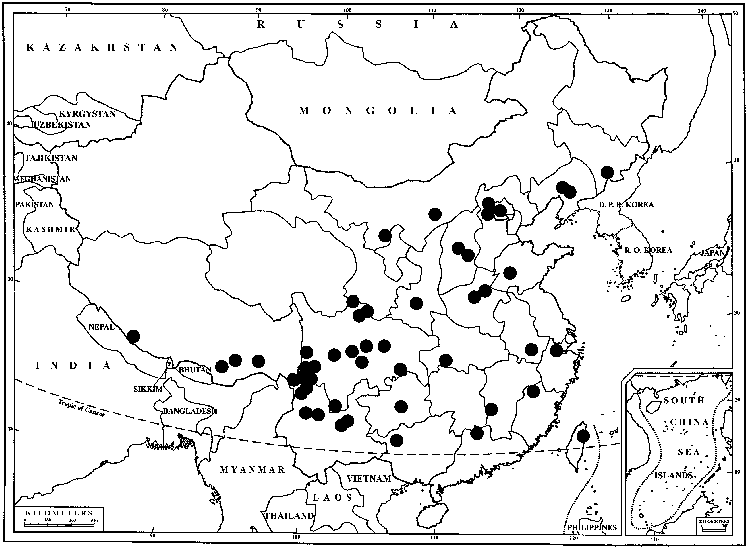Timmiella anomala
Laubm. Deutschl. 1: 592. 1888,.
Stems commonly branched. Leaf base narrower to little wider than the limb. Sexual condition dioicous, autoicous or synoicous, occasionally polyoicous. Seta usually 1.5–2.5 cm. Capsule with theca reaching 3–4 mm, operculum commonly 1–1.5 mm, peristome distinctly twisted.
Phenology: Sporophytes mature summer–fall (occasionally winter).
Habitat: Soil, humus, limestone crevices, vertical rock face
Elevation: moderate elevations (700-1500 m)
Distribution

Ariz., Calif., N.Mex., Tex., Wash., Mexico, Central America, Europe, Asia, n Africa.
Discussion
Timmiella anomala commonly grows in dusty, friable soil that makes dissections difficult. H. A. Crum and L. E. Anderson (1980–1983, vol. 4) suggested that this species may also be dioicous; K. Saito (1975) and Li X. J. et al. (2001) asserted that it is dioicous in Asia (Japan and China, respectively). A specimen from California, Showers 3326, MO, has stems with synoicous perichaetia and also apparently entirely perigoniate stems, possibly due to rhizautoicy. According to B. Allen (2002), Timmiella anomala in Central America has peristome teeth erect to very weakly twisted though these are described as at least once twisted in publications on other areas of the world. Material from the Yukon is sterile and only tentatively identifiable as this species.
Selected References
None.